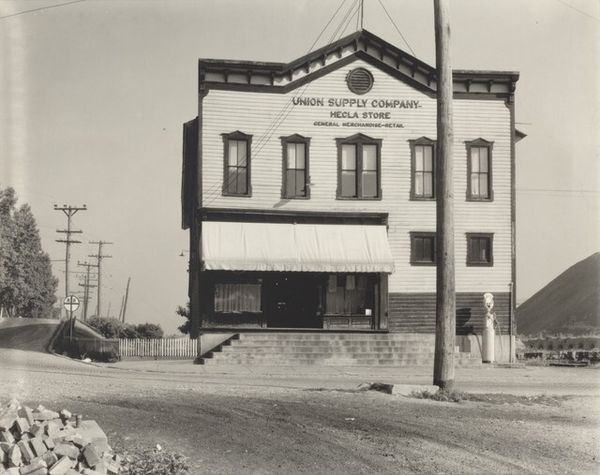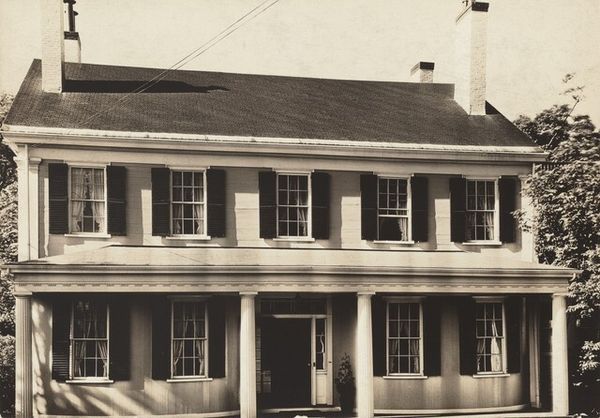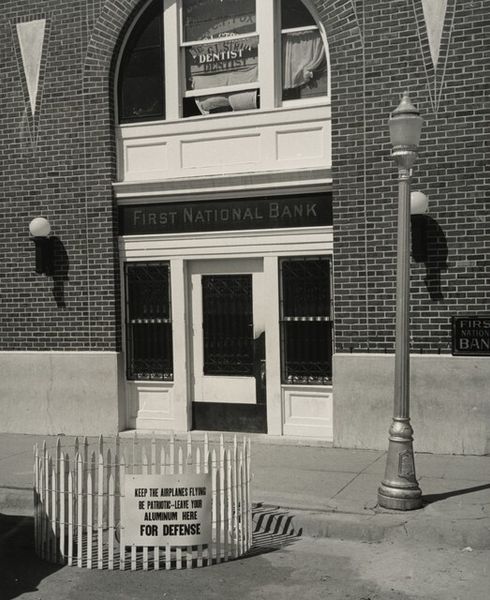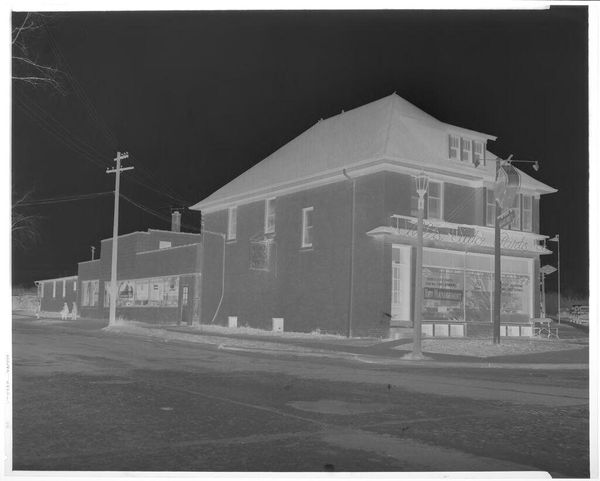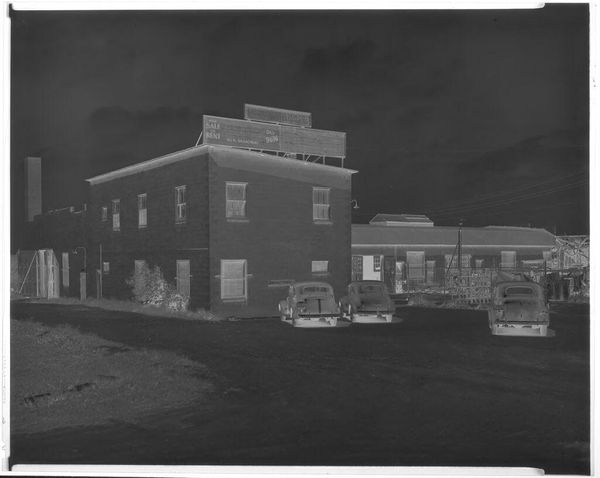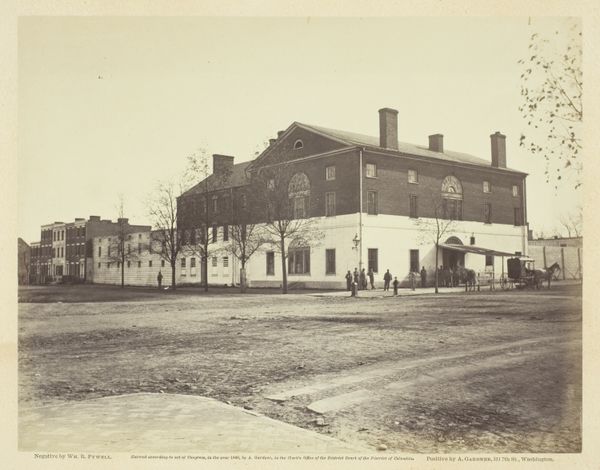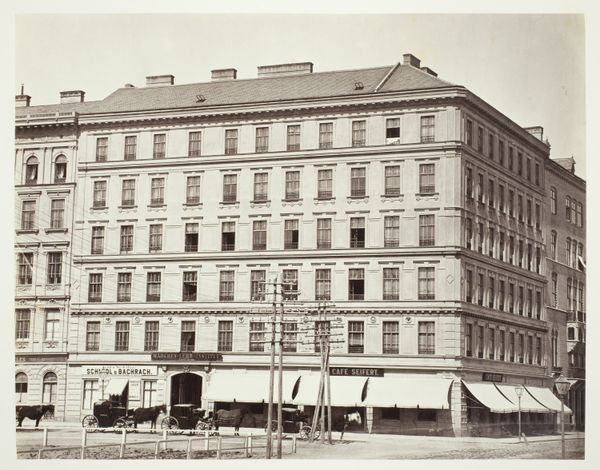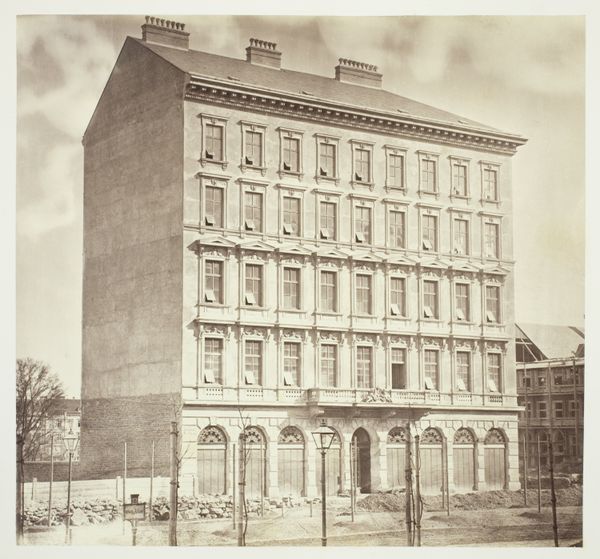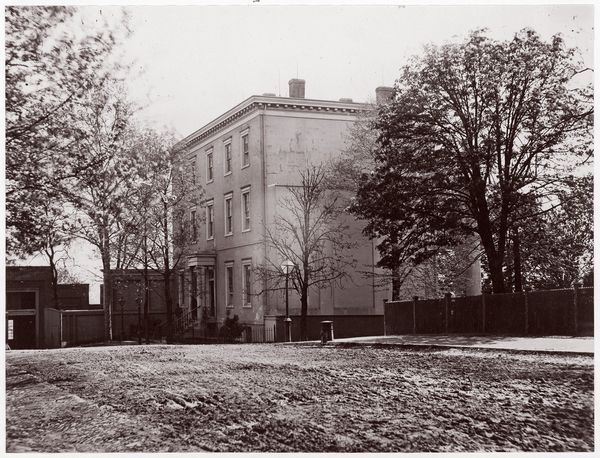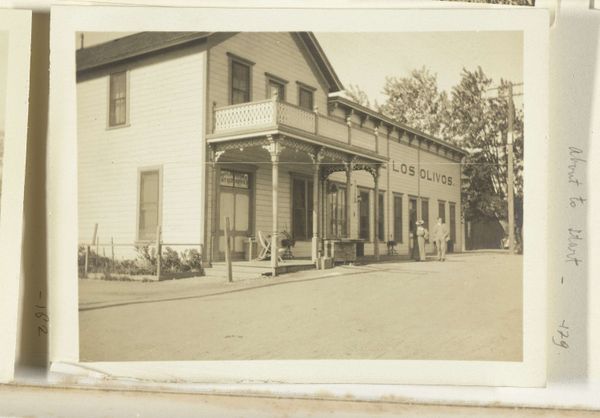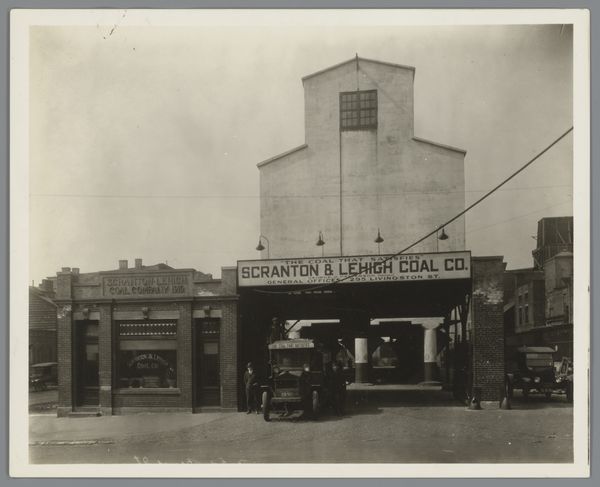
Corlears Street, nos. 3-5; Corner of Corlears and Monroe Streets after 4
0:00
0:00
photography, gelatin-silver-print, architecture
#
black and white photography
#
black and white format
#
historic architecture
#
street-photography
#
photography
#
gelatin-silver-print
#
monochrome photography
#
ashcan-school
#
cityscape
#
building photography
#
architecture
#
realism
#
historical building
Dimensions: image: 27.3 × 34.9 cm (10 3/4 × 13 3/4 in.) mount: 50.9 × 40.6 × 0.1 cm (20 1/16 × 16 × 1/16 in.)
Copyright: National Gallery of Art: CC0 1.0
Curator: There's something deeply melancholic about this image. It’s as if time itself has settled in the brickwork, watching. Editor: Indeed. We're looking at Berenice Abbott's "Corlears Street, nos. 3-5; Corner of Corlears and Monroe Streets," captured sometime after 1934, a gelatin silver print. The crisp details are remarkable; it's all about process here, that chemical alchemy giving texture to our lives. Curator: It breathes the old city, doesn’t it? I can almost smell the damp cobblestones and hear the echoes of horses' hooves. It stirs a sort of…romanticized longing. Editor: The cobblestones laid under foot bear marks of immense friction over time. Abbott’s focus on architecture allows us to analyze the means through which a sense of space and function is materialized – brick, wood, labor... what does the photograph suggest? The repetition of forms seems very deliberate; she captures the structural rhythm of everyday life in this city block. Curator: Rhythm is the word! Notice how the dark rectangles of the windows contrast with the expanse of brick. What secrets do you suppose lie behind those evenly spaced windows? Dreams stacked one atop the other, perhaps? Or are those windows simply black? Editor: Well, the "For Rent" sign provides another perspective. These physical structures impact how business is conducted – the access points and street configuration. Labor is central, as goods must enter, and commerce must flourish or this street dies. Curator: It feels a world away from our sanitized present. One thinks about the gritty reality of work during that period, the resilience of people etched into the very structures. Do you think it will be standing in another hundred years? What sort of memories would a new inhabitant give to it? Editor: Preservation is about remembering what a neighborhood's material base consisted of and represents: who used to sell fish and produce; where people met, cried, rejoiced, struggled for existence. I'd suggest that Abbott captured something fundamental. Curator: I can almost imagine these bricks groaning with the weight of the past. But also whispering a silent challenge to those who would try to erase them from our history. Editor: Precisely. Through attention to the details of material construction we consider social change.
Comments
No comments
Be the first to comment and join the conversation on the ultimate creative platform.
